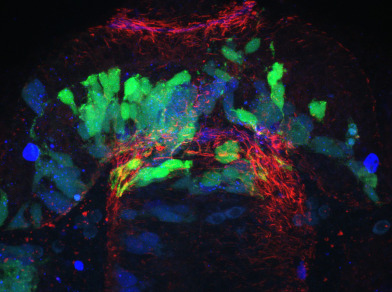The post optic commissure (POC) is a parabolic ribbon like structure which connects the two halves of the ventral anterior nervous system. It develops in concert with a host of glial cells, called a glial bridge, which has been proposed by us and others to perform the region for POC development. We and others have shown that a set of cell guidance ligands, Slits, are required for POC development, and that disturbance of these ligands leads to a variety of POC and glial bridge defects. In particular, slit1a has been suggested to be a non-canonical guidance receptor whose influence on the POC and glial bridge remains unclear. Using the you-too (Gli2DR) slit misexpression model which exhibits reduced slit1a and increased slit2/3 and coincident loss of POC formation, we have attempted to add back slit1a to rescue POC formation. We have built ΔSCOPE as a computational analytical tool and enable quantitative analysis of rescue and loss of function experiments performed on biological structures. We have used ΔSCOPE to determine whether slit1a can rescue POC development in the you-too background. We show that slit1a alone is not sufficient to rescue POC formation, but that it has a significant effect on glial bridge formation, which may contribute to the continued POC disruption observed in the slit1a you-too addbacks.
Slit1a Rescue DOI: https://doi.org/10.35482/bld.002.2019
2019
Slit1a Rescue: Role of slit1a, HSS1A, Barresi Lab, Smith College
Slit1a Rescue: Role of slit1a, HSS1AYOT, Barresi Lab, Smith College
Slit1a Rescue: Role of slit1a, non-HSS1AYOT, Barresi Lab, Smith College
Slit1a Rescue: Role of slit1a, WT, Barresi Lab, Smith College


